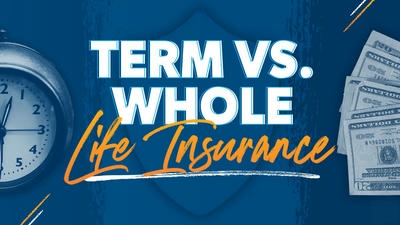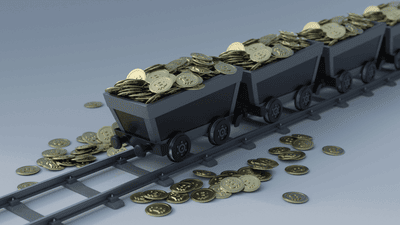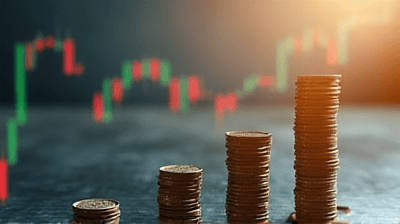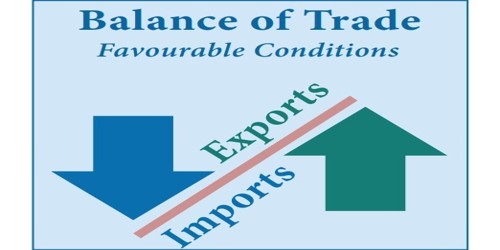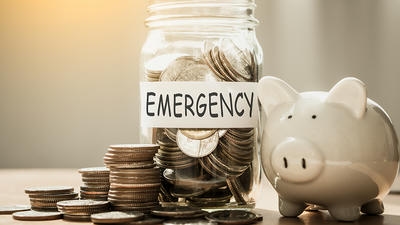
In an unpredictable world, financial stability hinges on preparedness, and an emergency fund is the cornerstone of any sound personal finance plan. As of May 21, 2025, 04:29 PM HKT, economic uncertainty looms with U.S. interest rates at 5.5 to 6 percent, inflation at 3 percent, and whispers of a potential mild recession in late 2025. From unexpected medical bills to job loss, life’s curveballs can derail even the most disciplined budget. Social media discussions on platforms like X underscore growing concern among consumers, with users sharing stories of financial hardship and advocating for emergency savings as a lifeline.
The Role of an Emergency Fund
An emergency fund is a dedicated pool of savings set aside for unexpected expenses, such as medical emergencies, car repairs, or job loss. Unlike investments or retirement accounts, it’s highly liquid, typically held in a savings account or money market fund, ensuring quick access without penalties. Financial experts recommend saving 3 to 6 months’ worth of living expenses, though the exact amount depends on your circumstances—job stability, dependents, or debt levels.
In 2025, the need for an emergency fund is acute. A Federal Reserve survey indicates 25 percent of Americans lack savings to cover a 1000-dollar emergency, relying instead on credit cards or loans. With rising costs and economic volatility, an emergency fund is not a luxury but a necessity, offering peace of mind and financial resilience.
Why an Emergency Fund Is Non-Negotiable

An emergency fund is critical for several reasons, each addressing the realities of personal finance in 2025.
1. Protection Against Financial Shocks
Life is unpredictable, and unexpected expenses—medical emergencies (average cost 2000 dollars for an ER visit), car repairs (500 to 1500 dollars), or home maintenance (1000 to 5000 dollars)—can strain budgets. In 2025, with healthcare costs up 4 percent and auto repair inflation at 5 percent, an emergency fund covers these without resorting to high-interest debt.
Example: A sudden 3000-dollar furnace repair in winter is manageable with an emergency fund, avoiding a credit card balance at 20 percent APR.
2. Safeguard During Job Loss
Economic uncertainty in 2025, with layoffs in tech and retail sectors reported on X, heightens the risk of job loss. The average unemployment duration is 20 weeks, and replacing income takes time. An emergency fund bridges the gap, covering essentials like rent (2000 dollars monthly) or groceries (500 dollars monthly).
Impact: A 3-month fund (7500 dollars for 2500-dollar expenses) provides breathing room to job hunt without panic.
3. Avoiding High-Interest Debt
Without savings, emergencies often lead to credit card debt or payday loans, with APRs of 20 to 400 percent. In 2025, U.S. household debt exceeds 17 trillion dollars, with credit card balances up 10 percent year-over-year. An emergency fund prevents this cycle, preserving long-term financial health.
Example: A 1000-dollar medical bill paid from savings avoids 200 dollars in interest over a year at 20 percent APR.
4. Emotional and Mental Security
Financial stress impacts mental health, with 40 percent of Americans reporting money-related anxiety in 2025 surveys. An emergency fund offers peace of mind, reducing worry about unforeseen costs. X users frequently cite emergency funds as a “sleep-at-night” factor, enabling focus on career or family.
5. Flexibility for Life Transitions
Beyond emergencies, a fund supports planned transitions—relocating for a job, starting a business, or retraining—without derailing finances. In 2025, hybrid work and gig economy trends make flexibility crucial, and a fund empowers confident decision-making.
Example: A 5000-dollar fund covers moving costs for a new job, avoiding reliance on loans.
Common Objections and Counterarguments
Despite its importance, some resist building an emergency fund, citing barriers. Here’s how to address them in 2025.
Objection 1: I Can’t Afford to Save
With living costs rising—rent up 5 percent, groceries 4 percent—many feel stretched. However, even small contributions (50 dollars monthly) build a fund over time. In 2025, cutting discretionary spending (e.g., one 5-dollar coffee weekly saves 260 dollars annually) makes it feasible.
Counter: Start with 1 percent of income (25 dollars for a 2500-dollar monthly income) and automate savings to a high-yield account.
Objection 2: I’d Rather Invest the Money
Investing in stocks or crypto offers growth (S&P 500 averages 7 percent in 2025), but markets are volatile, and selling during a dip incurs losses. Emergency funds prioritize liquidity and stability, using savings accounts yielding 4 to 5 percent.
Counter: Keep emergencies in savings; invest surplus funds after securing 3 to 6 months’ expenses.
Objection 3: I Have Credit Cards or Family Support
Credit cards carry high interest, and family support isn’t guaranteed. In 2025, relying on debt or others risks financial strain or strained relationships, especially with 30 percent of X users reporting loan repayment stress.
Counter: An emergency fund ensures independence and avoids costly borrowing.
Objection 4: I Don’t Need It, I’m Stable
No one is immune to surprises. In 2025, stable jobs in tech face layoffs, and unexpected health issues arise. A fund is insurance against the unknown.
Counter: Build a smaller fund (3 months) if stable, scaling up as circumstances change.
Building an Emergency Fund in 2025: Practical Strategies
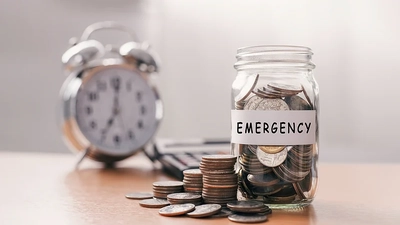
To create and maintain a robust emergency fund, follow these strategies tailored to 2025’s economic environment.
1. Determine Your Target Amount
Calculate monthly expenses—housing, food, utilities, insurance, debt payments. Aim for 3 months if you have stable income and no dependents, 6 months if self-employed or in a volatile industry.
Example: Monthly expenses of 2500 dollars require 7500 to 15000 dollars. Use a budgeting app like YNAB to track spending.
2. Start Small and Automate
Begin with manageable contributions (50 to 100 dollars monthly) to build momentum. In 2025, automate transfers to a high-yield savings account (e.g., Ally or Marcus, offering 4.5 percent) on payday to prioritize savings.
Action: Set up a 100-dollar monthly transfer to Ally on the 1st, increasing by 25 dollars annually.
3. Choose the Right Account
Store your fund in a liquid, low-risk account:
High-Yield Savings: 4 to 5 percent APY, FDIC-insured up to 250000 dollars.
Money Market Accounts: Similar yields, sometimes with check-writing privileges.
Avoid: Stocks, CDs (locked funds), or low-yield accounts (0.5 percent).
Action: Open a Marcus savings account, depositing 500 dollars initially, targeting 10000 dollars in 2 years.
4. Cut Expenses and Redirect Savings
Reduce discretionary spending to accelerate savings. In 2025, cancel unused subscriptions (average 50 dollars monthly) or cook at home (saving 100 dollars monthly vs. dining out).
Action: Eliminate two 10-dollar streaming services, redirecting 240 dollars annually to your fund.
5. Use Windfalls Wisely
Allocate bonuses, tax refunds, or side hustle income to your emergency fund. In 2025, the average tax refund is 3000 dollars, enough to jumpstart a fund.
Action: Deposit a 2000-dollar bonus into your savings account, reserving 500 dollars for discretionary spending.
6. Replenish After Use
If you tap your fund, prioritize rebuilding it. In 2025, resume contributions immediately, even at a reduced rate, to restore the buffer.
Action: After a 1000-dollar car repair, contribute 75 dollars monthly until the fund is restored.
7. Review and Adjust Annually
Reassess your fund yearly to account for lifestyle changes (e.g., new dependents, higher rent). In 2025, inflation may increase expenses, necessitating a larger fund.
Action: Review expenses in December, adjusting your target from 7500 to 8000 dollars if rent rises.
Case Study: Building an Emergency Fund in 2025
Consider Sarah, a 28-year-old teacher in Denver earning 4000 dollars monthly after taxes. Her expenses—1200 dollars rent, 400 dollars groceries, 300 dollars utilities, 200 dollars car, 100 dollars insurance—total 2200 dollars monthly. Sarah aims for a 3-month emergency fund (6600 dollars) but has no savings due to student loans.
Sarah starts with 50 dollars monthly, automating transfers to a Marcus savings account (4.5 percent APY). She cuts two 15-dollar subscriptions, redirecting 30 dollars monthly, totaling 80 dollars monthly. A 1500-dollar tax refund in April 2025 boosts her fund to 1980 dollars by year-end (80 dollars x 9 months + 1500 dollars). Interest adds 50 dollars.
By mid-2026, Sarah reaches 6600 dollars, gaining confidence to pursue a side hustle without financial fear. X discussions inspire her, with users sharing similar small-step successes. When a 1000-dollar medical bill arises, Sarah pays it without debt, replenishing the fund at 100 dollars monthly. Her emergency fund proves non-negotiable, safeguarding her stability.
Implications for Personal Finance in 2025
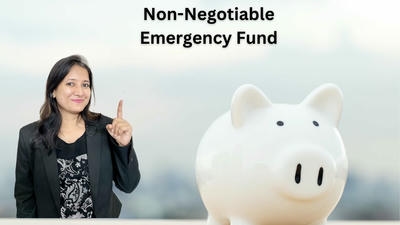
An emergency fund is a universal need in 2025, with broad implications:
Financial Resilience: Protects against 30 percent of Americans’ inability to cover a 400-dollar emergency, per 2025 data.
Debt Reduction: Reduces reliance on credit cards, critical as balances rise 10 percent.
Economic Uncertainty: Cushions against job market volatility, with 5 percent unemployment projected.
Mental Health: Alleviates stress, aligning with X users’ emphasis on financial peace.
Risks of Not Having an Emergency Fund
Without a fund, you risk:
Debt Traps: High-interest loans accrue, with 20 percent APR adding 200 dollars yearly per 1000 dollars borrowed.
Missed Opportunities: Inability to fund transitions like job changes or education.
Financial Instability: One emergency can derail budgets, delaying goals like homeownership.
Conclusion
An emergency fund is non-negotiable in 2025, providing a financial safety net against life’s uncertainties. By shielding against shocks, preventing debt, and fostering peace of mind, it’s the foundation of personal finance in a volatile economy. Starting small, automating savings, and leveraging windfalls make it achievable, even on tight budgets. As economic challenges like high interest rates and potential recessions loom, a 3 to 6-month fund empowers you to navigate setbacks and seize opportunities. In a world where X users champion financial preparedness, building an emergency fund is not just smart—it’s essential for long-term stability and success.



